
Overview: When you order pork from the store or butcher, it has already been broken down for the home kitchen. Before that happens, pork is broken down into primal cuts and then subprimal cuts. This article reviews those different cuts of pork in detail.
Pork is a staple meat product in many American households, often featuring in breakfast, lunch and dinner dishes. The first pigs arrived in Florida along with explorer Hernando de Soto in 1525. Pork quickly became popular partly because it preserves so well, allowing farming families to butcher hogs before winter and eat the meat all winter long.
Today, people still enjoy cured pork products like ham and bacon, along with fresh cuts like pork chops, ribs and tenderloin. Pork is the most consumed red meat worldwide, and Americans consume just over 50 pounds of pork per capita annually. It’s tasty on its own, but pork can also add a delicious kick of flavor to soups, stews and other dishes. You may even see pork bacon as an ingredient in some desserts.
This guide explains the various cuts of pork you can purchase and the best ways to prepare them. With this knowledge, you can choose the right cuts and cooking methods for any meal.
Cuts of Pork Diagram
Here’s a diagram of the different cuts of pork so you can understand where they come from:

What Are the Primal Cuts of Pork?
There are two main types of cuts for pork — primal and subprimal. Most butchers separate pork meat into large sections called primal pork cuts. The amount varies per butcher, but usually there are four:
- Shoulder: The shoulder encompasses the front portion of the hog. You might hear the upper part of this primal cut called the butt and the front leg called the picnic. Pork shoulder meat is fatty and tough.
- Loin: The middle of the hog consists of two sections — the loin and the belly. The loin primal cut is near the ribs and exceptionally tender and lean.
- Leg: This cut includes the hog’s hind leg and rump. This portion is where ham comes from, so you’ll sometimes hear the leg section referred to as the ham.
- Belly: The belly is the bottom portion of the middle of the hog. The belly is sometimes called the side, and it’s the fattiest portion of the hog.
What Are the Subprimal Pork Cuts?
Pork primal cuts begin as large sections that butchers cut into smaller but still relatively large subprimal cuts. You may see subprimal cuts sold whole or cut down further into pork retail cuts. Retail cuts are the smaller, individual portions sold at grocery stores and butcheries that are easier to cook with.
Each cut of a pig has unique qualities that contribute to its flavor and texture. That means you want to pay attention to the specific parts of pork you have when deciding on a cooking preparation method. Let’s look at some pork subprimal cuts, categorized by the primal cuts they originate from.
Pork Shoulder Subprimal Cuts
Pork shoulder is quite fatty, making it a popular choice for sausage meat. Sausage comes in many forms, including links, ground meat and patties. Each sausage type has varying spices or fillers that enhance the pork’s flavor. You can pan-fry or grill sausage and serve it on its own or as part of a dish.
Many people also enjoy making pulled barbeque pork with pork shoulder cuts. Slow cooking is the best cooking method for pork shoulder, as it makes this tough meat more tender. Shoulder portions are usually tougher because the animal uses these muscles frequently to move around.
Pork shoulder names vary depending on the type of subprimal cut.
1. Shoulder Blade
The shoulder blade is the upper portion of the pork shoulder. This cut goes by a few names, including shoulder butt, butt roast or Boston butt. The “butt” label makes it sound like it comes from the rear, but the butt is the thicker end of the pork shoulder. It has excellent marbling and can be very tender when slow-cooked. You can purchase this cut whole with the bone in or boneless, and you can find smaller retail cuts like blade steaks.
2. Picnic Shoulder
Just below the shoulder blade cut is the picnic shoulder, also known as the picnic ham, picnic roast or arm roast. One possible explanation for the name “picnic ham” is that this cut is more affordable, making it suitable for a casual meal — like a picnic — instead of a formal dinner. It’s often less expensive than other ham cuts because it is somewhat fatty and sinewy, but it can become tender through slow-cooking methods like roasting or braising.
3. Jowl
Unlike Boston butt or picnic ham, the jowl is just what it seems — a pork cut that comes from a hog’s cheeks. In Southern cuisine, chefs who prepare this delicacy often cure and smoke it, turning it into jowl bacon. You can fry slices of jowl on a skillet just like bacon or use it to flavor soul food favorites like black-eyed peas or collard greens. Italians use pork jowl to make guanciale, a signature cured pork product.
4. Hock
Between the picnic shoulder and the foot is the hog’s lower leg, known as the hock. This cut is tough and well-muscled because of its location on the hog, making it an economical cut of meat. When slow-cooked at a low temperature, it can become incredibly tender. It’s also a great flavor addition to stews and other dishes.
5. Foot
The shoulder primal cut also includes the hog’s front feet. The front feet are smaller than the back and have less meat, making them suitable for use in stock or broth for soups. Pig feet make liquids thicker and jelly-like because they are naturally rich in collagen, a key ingredient in gelatin.
Pork Loin Subprimal Cuts
The term “eating high on the hog” refers to the luxury of pork loin cuts because this section is the tenderest pork cut. The loin resides between the shoulder and back legs and is quite lean. Thanks to its tenderness, loin meat only needs a short time in the oven or grill to cook, otherwise it can become quite dry.
The loin section is home to the popular tenderloin, a lean, thin piece of tender meat that runs along the spine. The loin can also make back bacon, a staple in Canada, England and Ireland. Back bacon is a leaner version of the more well-known bacon made from the pork belly. While it has less fat, it still includes some fat that runs along the hog’s back. People process it through curing and smoking, which gives it that signature bacon flavor. However, it’s more similar to ham than belly bacon.
Pork loin consists of a large piece of muscle that separates into three subprimal cuts.
1. Loin Rib End
The loin rib end section is the part of the loin adjacent to the shoulder. As the name suggests, this section includes part of the animal’s ribcage and is the source of baby back and country-style ribs.
Baby back ribs come from the upper part of the ribcage closest to the backbone. They are much leaner, smaller and more expensive than spareribs located near the belly. Country-style ribs are more like mini pork chops and come from the shoulder blade end of the loin, which contains more fat. A popular method of preparing them is braising, which uses both hot and dry cooking methods.
2. Loin Center
The loin center is a prime location for delicious pork roasts, steaks and chops. You can usually find these market-ready cuts with or without bones. This section of the animal gets little use, making it extra juicy and tender. You can grill, pan-sear or braise loin center chops and bake roasts without needing to tenderize the meat.
3. Sirloin
The sirloin is the section of loin that connects to the back leg or ham section. The sirloin contains some fat, though it is still fairly lean. Butchers can cut this section into roasts and chops. Cuts from this part of the loin tend to be more affordable than those from the loin rib end and center, but they can still be delicious.
Pork Leg Subprimal Cuts
The leg primal section consists of the rear leg up to the hip. This is where traditional ham comes from, but it also includes a hock and foot like the shoulder primal cut. The best way to prepare a ham depends on the specific cut and whether it is fresh or cured. Fresh ham is a raw cut of meat that tastes more like a pork roast, while cured ham has undergone the curing or smoking process before going to market.
Cured ham comes in two varieties — country and city ham. Country hams are dry-cured and safe to eat without cooking. You can also pan-fry country hams in slices or soak and bake them like a wet-cured ham. City hams are wet-cured and typically precooked, so preparing one entails heating it through. Baking is a common way to do this. You can also add a glaze, marinade or special garnish.
The subprimal cuts of a pork leg include the following.
1. Leg Butt
The butt end of the ham — sometimes called the sirloin or rump end — is at the top of the leg primal cut. This half of the ham is leaner and more tender than the shank end. It is also easier to carve because it only contains one bone. You can also find boneless or bone-removed hams. Butt hams have a rounder appearance than shank end hams.
2. Leg Shank
The shank-end ham is below the butt portion. Shank-end hams have a distinctive conical shape, making them a beautiful centerpiece at a holiday dinner. However, this cut is fattier and not quite as tender as the butt portion. The shank-end ham contains the shank bone and part of the femur, so it is slightly more complicated to carve.
3. Hock
At the end of the shank, you’ll find what’s known as the hock. People also commonly call this portion of the rear legs ham hocks, shanks or pork knuckles. You’ll need to cook raw hocks through, but you only have to warm cured and smoked hocks. You can slow-cook hocks and serve them as an entree, but it’s more common to find them used as a flavoring in soups and other dishes. Slow cooking allows the collagen in the hock to break down, making the meat tender.
4. Foot
The foot on a pig also goes by the name trotter or pettitoe. Pigs have four feet, but the back feet are larger than the front, making these feet better for producing pickled pig’s feet and other trotter dishes. Many cultures have recipes dedicated to preparing pig’s feet. Slow cooking is a must with feet since it tenderizes the thick skin and connective tissue.
Pork Belly Retail Cuts
The belly primal cut runs along the underside of the hog and has a reputation for being the fattiest part. This primal section does not have subprimal divisions, but it contains two types of popular belly retail cuts — bacon and spareribs. The belly portion without the spareribs is called the side.
Typical American bacon — called side or streaky bacon — comes from the belly of the pig. The slices can be thick or thin with varying amounts of fat. Pan-frying is a great way to render the fat and make the bacon crisp. In addition to being a delicious breakfast meat, bacon is also a popular flavor addition or garnish for many dishes. The salt-cured Italian pancetta also comes from the pork belly.
Spareribs come from the lower part of the ribcage, just above the belly. They are larger, meatier and more affordable than baby back ribs and become tender and juicy through low and slow cooking. Supermarkets and butcher shops sometimes trim these ribs down and label them as St. Louis-style spareribs. That means the butcher removed the breastbone and cartilage, leaving a more uniform, rectangular slab of ribs. Roasting and smoking are ideal methods for preparing St. Louis-style spareribs.
Shop Mouthwatering Pork Products From S. Clyde Weaver
At S. Clyde Weaver, we put more than a century of experience to work to bring you high-quality smoked meats and cheeses prepared with the utmost care. You’ll taste the difference when you take a bite of our smoked bacon, juicy ham, perfectly seasoned sausage and more.
We understand how to get the most out of each cut of pork to make it moist, tender and flavorful. All you have to do is bring these delicious meats to your dinner table and watch your family or guests devour every bite. Browse our online store to learn more about our products and place an order today!
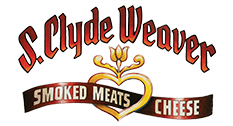



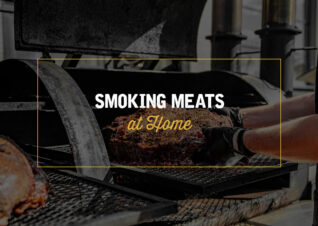




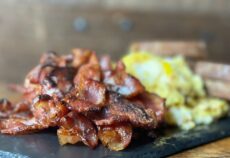
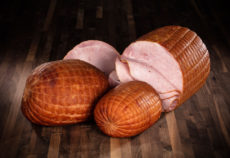

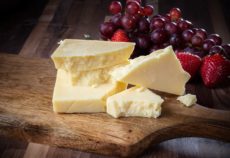
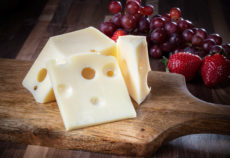
Maureen: Those tender strips of meat are the tenderloins. They are located inside the pig from center loin to sirloin at either side of the spine.
Ann: The flavor depends on the preparation. If they are marinated in the same brine solution, and smoked the same way as a ham, they’ll taste much like ham. They’ll have to be marinated for two to eight hours depending on their thickness so the flavor penetrates fully.
Shut Up and Take My Money
Please identify the name of the portion of the pig, ever so tender, and I was told there are only two of per pig. Can’t recall where my husband said they were located in the pig. My husband would call the owner of Lellie’s Restaurant downtown Detroit in the 70s to pre-order them for our dinner reservation. Thank you.
I asked a Leslie waiter. In 2020 and he couldn’t answer, perhaps too young and times have changed.
What exactly is souse? Is it safe to eat? Are chittlings still being sold?
Good
What is cuppa
Why do smoked pork chops taste like ham? Sometimes they are flavorful and other times not.